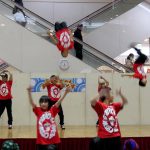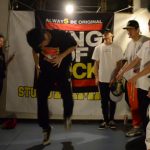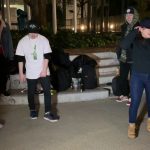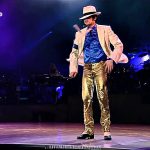世界のイケてるダンス動画を紹介するキュレーションメディア「ダンスファンクラブ」
今回ご紹介したい動画は、父が日本にブレイクダンスに一大ブームの先駆けを作ったTonyGOGOの血を継ぐ福岡出身の兄弟ダンサーGO GO BROTHERS!
ロッキングとポップダンスを強みにK B-Boy ChampionshipsのLOCKING部門で優勝し、ロックダンス界の頂点に立ち世界で活躍する日本人ダンサー兄弟だ!
そんな実力派の世界で活躍している彼らのダンス動画は2440回再生されている「I Look for Religion in War – Dave Meder (feat. Philip Dizack)」だ!
再生時間:08:25
動画の説明文より引用文
Pianist and composer Dave Meder presents “I Look for Religion in War,” the second single from the upcoming album “Unamuno Songs and Stories” (arriving October 29, 2021 on Outside In Music).Pre-order before the release for exclusive content including alternate takes, unreleased live performance videos, scores, and more:
Link: http://www.davemeder.com/preorderVideo: Adrien H. Tillmann (http://www.aht1985.com)
Label: Outside In Music (http://www.outsideinmusic.com)ABOUT THE ALBUM:
“Unamuno Songs and Stories” is a stunning response to recent sociopolitical turmoil in the United States, as a global pandemic, a renewed struggle for racial reckoning, a fraught national election, and a contentious political transition have left so many of us scrambling to explain what is happening to our nation. Using the writings of Spanish Civil War-era philosopher Miguel de Unamuno as historical context, pianist Dave Meder leads an intensely emotive and brilliantly orchestrated set that explores the tensions between democracy and authoritarianism, internationalism and nationalism, and religious faith and non-belief.
“Unamuno Songs and Stories” features Meder’s current working trio of Marty Jaffe (bass) and Michael Piolet (drums), who met over ten years ago at the Ravinia Steans Institute summer jazz residency and recently reunited for a tour prior to recording the album in May 2021. Special guests Miguel Zenón (alto saxophone) and Philip Dizack (trumpet) add beautiful colors and wide-ranging solo voices to the core group on select tracks.
ABOUT THE TRACK:
I LOOK FOR RELIGION IN WAR is a line from an Unamuno philosophical essay entitled “De la correspondencia de un luchador” (“From the Writings of a Warrior”). The essay portrays, all at once, a sense of dystopian warfare, and a deeply spiritual sense of peace. Unamuno twists our conventional idea of “peace,” claiming it to be nothing more than a temporary form of reality: one that breeds envy and awareness of the inequalities between nations or groups. War and struggle, according to Unamuno, are the more permanent ideals that ultimately give rise to true mutual understanding. It’s a rather provocative idea, but perhaps one that we see borne out in history. As a human race, the only constant we seem rely on is war. This perpetual struggle for a relatively fleeting sense of “peace” has, in effect, become our deeper spiritual peace…our guiding ideal…our true religion. Unamuno defends this idea with lines such as “…don’t preach peace to me, for I fear it…,” “while you may fight for victory, I fight for the fight itself…”
And so, the religion of life is a perpetual fight – a fight against each other, a fight against our impending spiritual eternity, even a fight against God itself. And yet, Unamuno describes this kind of “religion” as admirable, and even peaceful.
The music begins in the fog of war, with bowed bass lines and half-valve effects on the trumpet suggesting a hazy atmosphere. The piano melody emerges, timidly, out of the carnage (0:23). Eventually, a regular, plodding rhythm in the left hand of the piano (0:53) sneaks into the piece, signifying the beginning of a long march forward in the metaphorical war of humanity. The piano solo here weaves its way through the bombs of the drums (1:33) before handing off the melody to the trumpet (2:08). The group continues to build together via a trumpet improvised solo (2:29) and an adaptation of the initial melody in a new harmony (3:03).
Once we arrive at the height of our collective struggle – gnashing, fighting, and warring – we suddenly find our peace, or our religion (3:36). The music collapses into an idyllic, hymn-like melody loosely influenced by the piano works of Spanish composer Isaac Albéniz (3:55), followed by a rhapsodic bowed bass solo (5:07). At this point, we have become comfortable with the idea that the human struggle itself is our religion, and by the tone of the music, we have come to “worship” it as such. Armed with this acceptance, the group charges into battle with renewed confidence (6:18), as we recapitulate the hymn-like melody and the original melody in turn.
出典:Dave Meder
出典元URL:https://www.youtube.com/watch?v=vnPOCauZbeQ
























 PAGE TOP
PAGE TOP